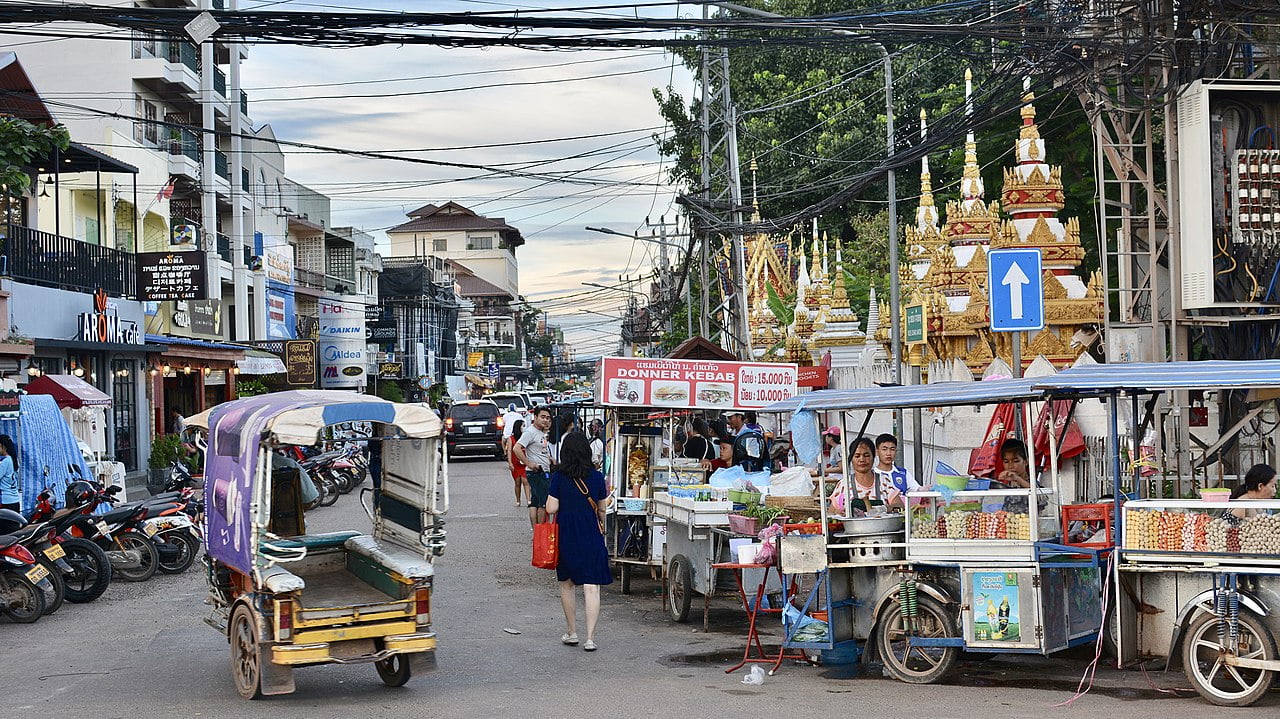Welcome to Laos, a captivating land where the rich tapestry of history, diverse people, and unique cultural heritage converge with an exquisite array of flavors that define the essence of Laos Food.
In this post, we embark on a journey through the vibrant and diverse culinary tapestry of Laos, exploring the unique tastes and traditional dishes that make Laos Food an unmissable experience for any discerning food enthusiast.
Laos: Land of a Million Elephants
Nestled in the heart of Southeast Asia, Laos is a landlocked country bordered by Myanmar, China, Vietnam, Cambodia, and Thailand.
With a history dating back to the ancient Khmer Empire, Laos has evolved into a nation with a population of around 7 million people. The Lao people, known for their warmth and hospitality, contribute to the rich cultural mosaic that defines this nation.
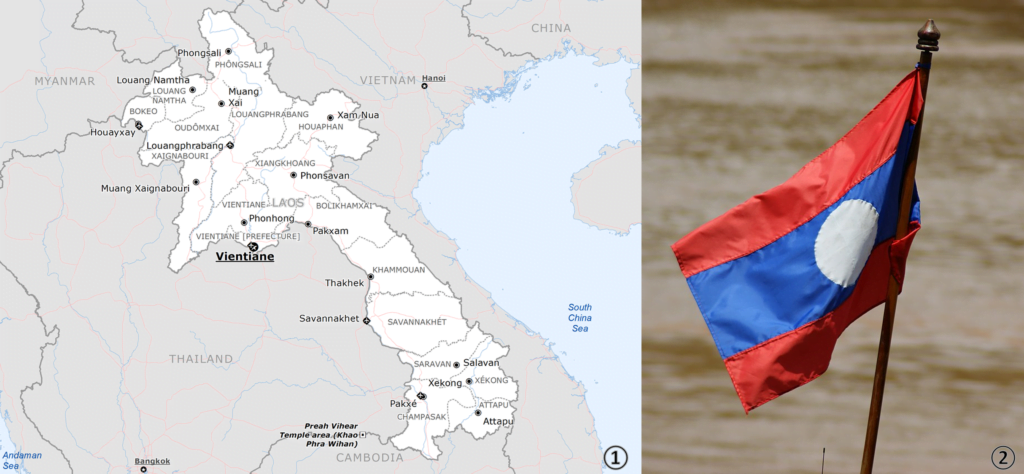
② Laos flag. © Allie_Caulfield from Germany, CC BY 2.0, via Wikimedia Commons
The vibrant red and blue hues of the Laotian flag symbolize the courage and prosperity of the country, while the official language, Lao, is spoken throughout the nation. Laos boasts a unique blend of Theravada Buddhism, animism, and indigenous beliefs, shaping a cultural identity that is both captivating and spiritually rich.
Laos Food: Culinary Treasures That Reflect Tradition
Our exploration of Laos foods delves into a symphony of tastes, celebrating the artistry of blending fresh herbs, spices, and proteins.
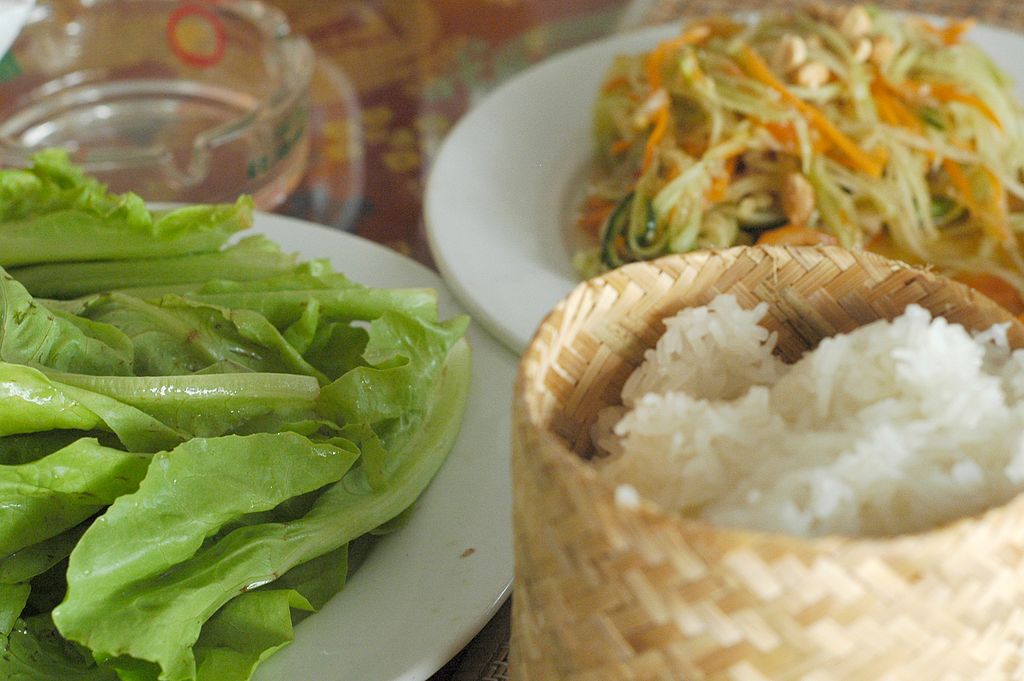
From the revered Sticky Rice to the iconic Tam Mak Hoong, each offering encapsulates the warmth and satisfaction inherent in Lao culinary traditions.
This gastronomic odyssey through the rich tapestry of Laos foods is where every bite is an exploration of the country’s vibrant cultural heritage.
Sticky Rice (Khao Niew)
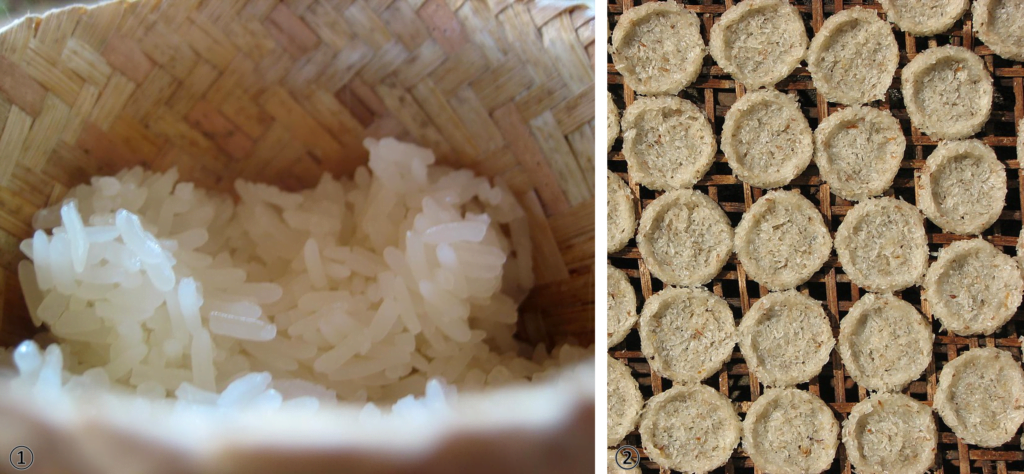
② Traditional Laotian sticky rice cakes being dried in the sun, Luang Prabang. © reibai, CC BY 2.0, via Wikimedia Commons
At the core of Laos food lies the beloved Sticky Rice (Khao Niew), a staple that graces every table in the country. More than just sustenance, it symbolizes luck and prosperity, weaving its way into the fabric of Lao culinary traditions. You’ll find it usually served in a tip khao container.
Laap/Larb
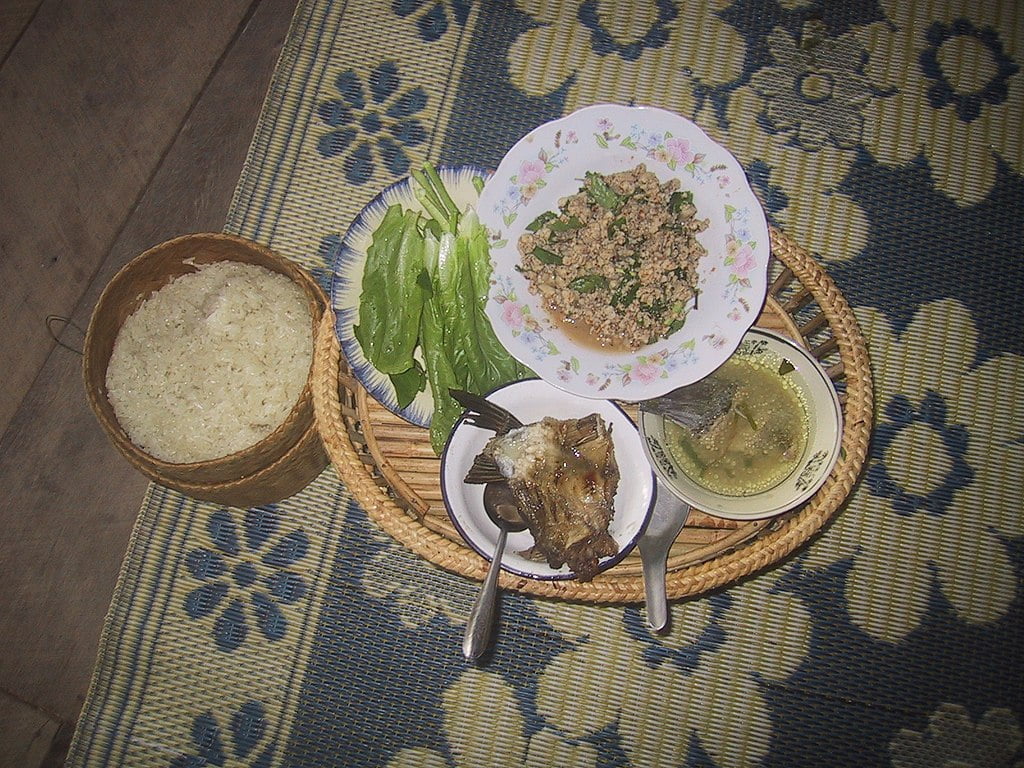
Enter the world of Laap/Larb, a symphony of flavors that epitomizes Laos food. This traditional minced meat salad combines the richness of chicken, pork, beef or fish with lime juice, fish sauce, mint, and ground rice, showcasing the artistry of blending fresh herbs, spices, and proteins.
Tam Mak Hoong – Lao Papaya Salad
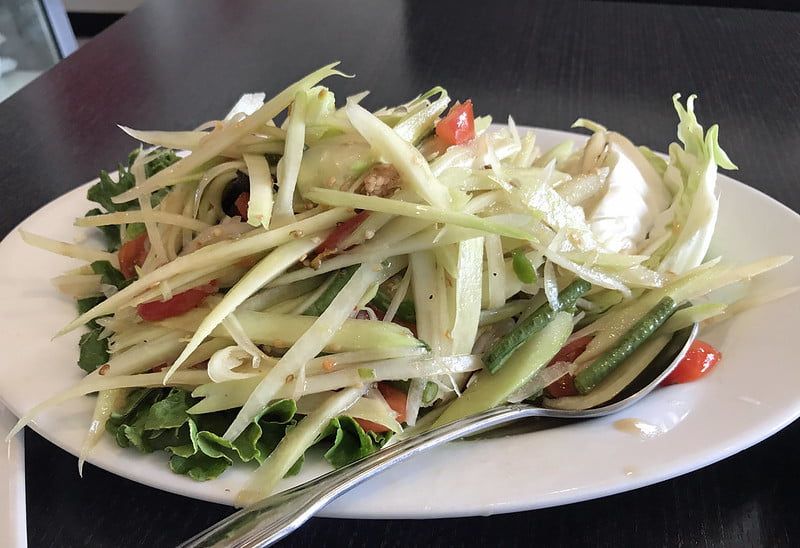
No Laos food expedition is complete without indulging in Tam Mak Hoong, the iconic green papaya salad. A harmonious blend of shredded green papaya, tomatoes, chili, lime, fish sauce, and peanuts, this dish encapsulates the perfect balance of sweet, sour, salty, and spicy tastes in Laos food.
Mok Pa
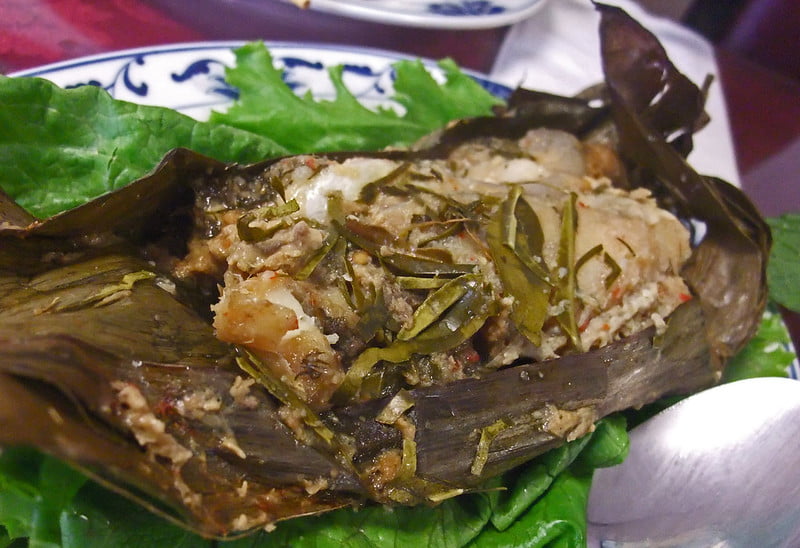
Explore the delicate dance of flavors in Mok Pa, where fish is enveloped in banana leaves, marinated in herbs and spices, and steamed to perfection.
This Laos food creation preserves the natural essence of the fish while infusing it with the aromatic notes of lemongrass, dill, and galangal.
Khao Piak Sen
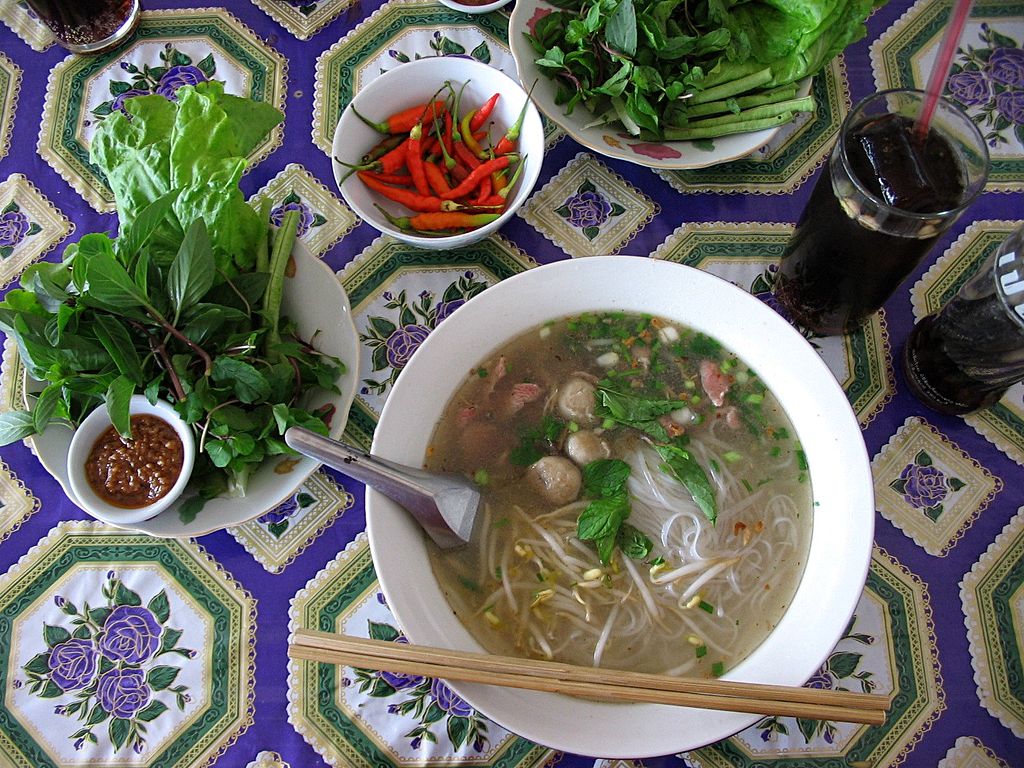
Satisfy your soul with Khao Piak Sen, a comforting rice noodle soup that embodies the heartiness of Laos food. With wide rice noodles, tender meat (often chicken or pork), and a flavorful broth, this dish is a testament to the warmth and satisfaction found in Lao culinary traditions.
Or Lam
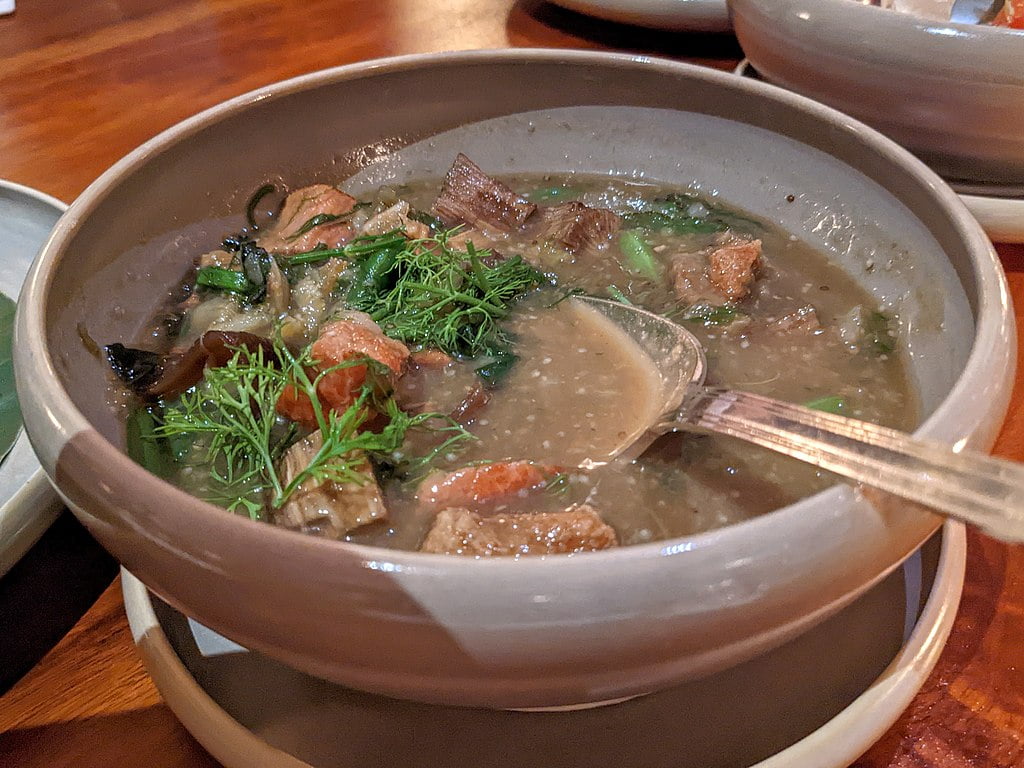
Delve into the time-honored Or Lam, a slow-cooked stew that weaves together meat, vegetables, and an array of herbs and spices. Rich in flavor and cultural significance, this Laos food masterpiece is a celebration often reserved for special occasions and festivals.
Taste of Exotic Laos Food
As you embark on your culinary journey through Laos, brace yourself for an exploration of exotic flavors that push the boundaries of traditional cuisine.
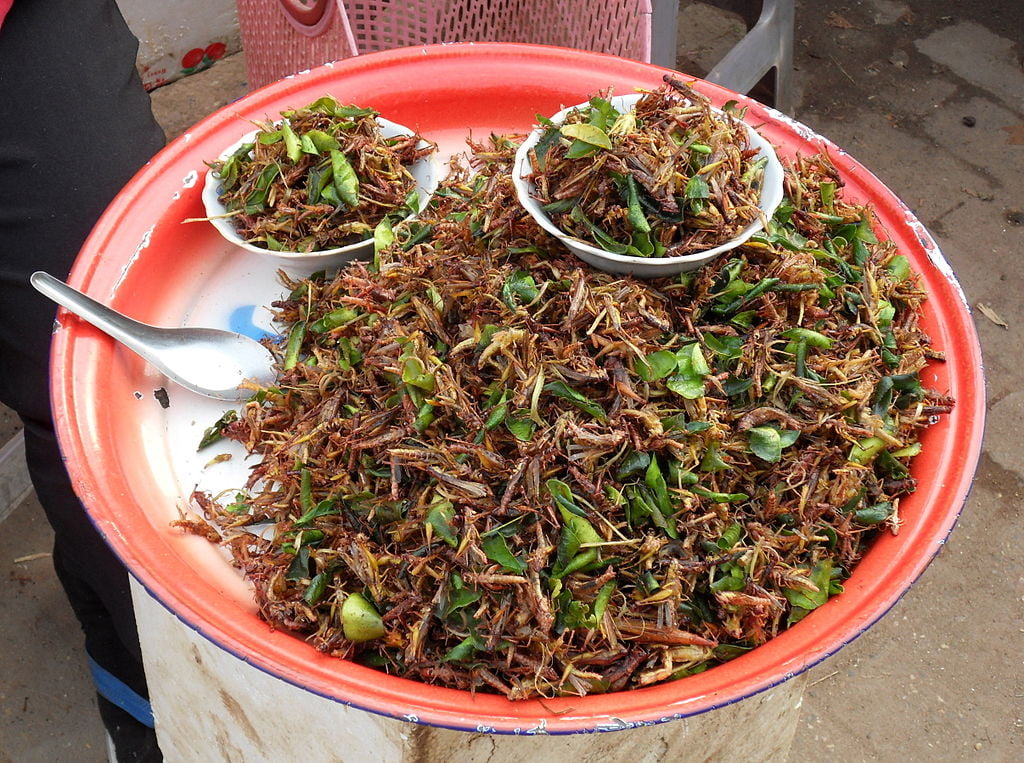
Laos, with its rich biodiversity and cultural influences, offers a unique opportunity to indulge in dishes that might be considered more adventurous. Here’s a glimpse into the world of exotic food consumption in Laos:
Ant Egg Soup (Kaeng Kai Mot Daeng)
Prepare your taste buds for a unique experience with Ant Egg Soup. Locals relish this dish made from red ant eggs, creating a flavorful and protein-rich broth. It’s a testament to the resourcefulness of Lao cuisine, turning nature’s bounty into a culinary delicacy.
Bamboo Worms (Maeng Mun)
If you’re feeling particularly adventurous, consider trying Maeng Mun, bamboo worms that are often deep-fried to a crispy perfection. These crunchy critters are not only a popular snack but also a source of protein, showcasing the resourcefulness of Lao cuisine.
Frog Legs (Ping Pet)
Frog Legs, known as Ping Pet, are a delicacy in Laos. Often grilled or fried, these amphibious morsels offer a slice of delicate and tender meat, providing a unique culinary experience for those willing to step outside their comfort zone.
Buffalo Skin Salad (Yum Khai Mod)
Yum Khai Mod is a salad that might surprise your taste buds, featuring buffalo skin as the main ingredient. The skin is thinly sliced, boiled, and mixed with herbs and spices, offering a textural adventure that adds a distinct element to the Lao culinary landscape.
River Weed (Khai Pen)
River Weed, or Khai Pen, is a vegetarian dish that involves harvesting algae from rivers. The algae are then dried, seasoned, and deep-fried to create a crispy and savory snack. It’s a unique and sustainable way to embrace the flavors of Laos.
Remember, as you delve into the world of exotic foods in Laos, it’s essential to approach these dishes with an open mind.
If you have allergies or dietary restrictions, inquire about the ingredients used and ensure that your adventurous exploration aligns with your personal preferences.
Places to Visit in Laos
As you traverse the tantalizing terrain of Laos’ culinary wonders, immerse yourself not only in the vibrant flavors but also in the breathtaking beauty and cultural marvels that define this enchanting nation.
With a diverse tapestry of landscapes and a rich historical heritage, Laos beckons you to discover its treasures beyond the dining table.
Luang Prabang: The Enchanting Ancient Capital
Begin your cultural journey in Luang Prabang, a UNESCO World Heritage site that weaves together history, spirituality, and architectural splendor.
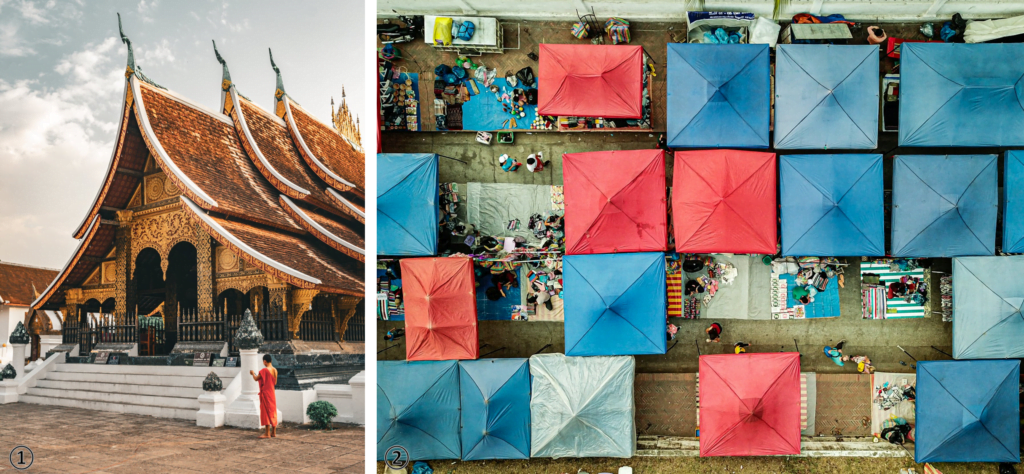
② Night Market, Luang Prabang, Laos. Photo by Sung Shin on Unsplash
Wander through the historic streets adorned with ancient temples and French colonial architecture, and explore vibrant markets that showcase the true essence of Laotian life.
Vang Vieng: Nature’s Playground
Venture into the embrace of nature in Vang Vieng, where limestone karst landscapes and meandering rivers create a haven for adventure seekers.
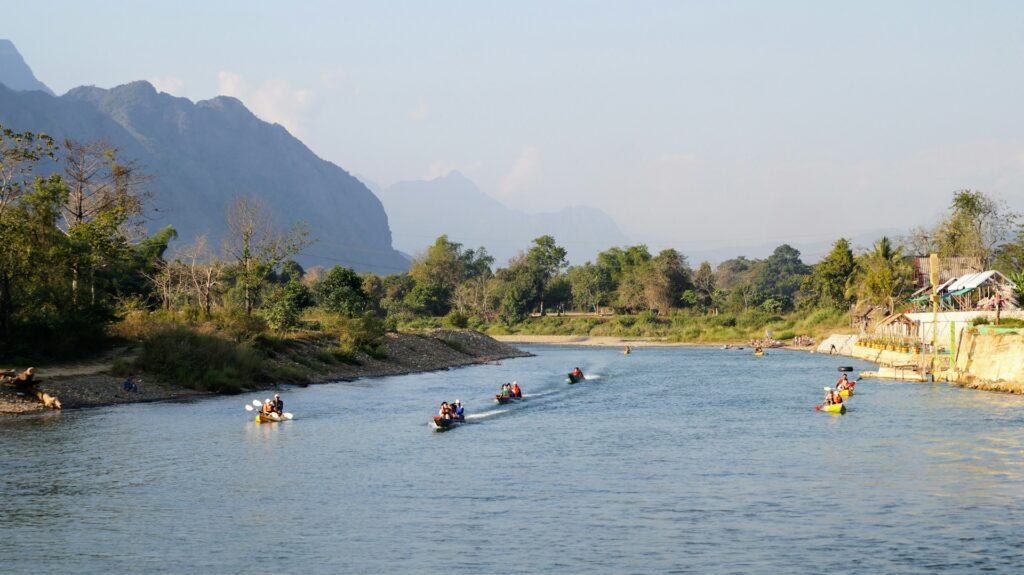
Explore hidden caves, indulge in tubing along the river, or simply revel in the awe-inspiring scenery that makes Vang Vieng a nature lover’s playground.
Plain of Jars: Mystical Megalithic Marvels
Unearth the mysteries of the Plain of Jars, an archaeological marvel featuring thousands of ancient stone jars scattered across the landscape.

Located around 400 kilometers to the northeast of Lao’s capital city, Vientiane, and shrouded in myths and legends, this site provides a glimpse into Laos’ ancient past and cultural intrigue.
Bolaven Plateau: Coffee Paradise
Escape to the cool climate of the Bolaven Plateau, a region renowned for its lush coffee plantations.
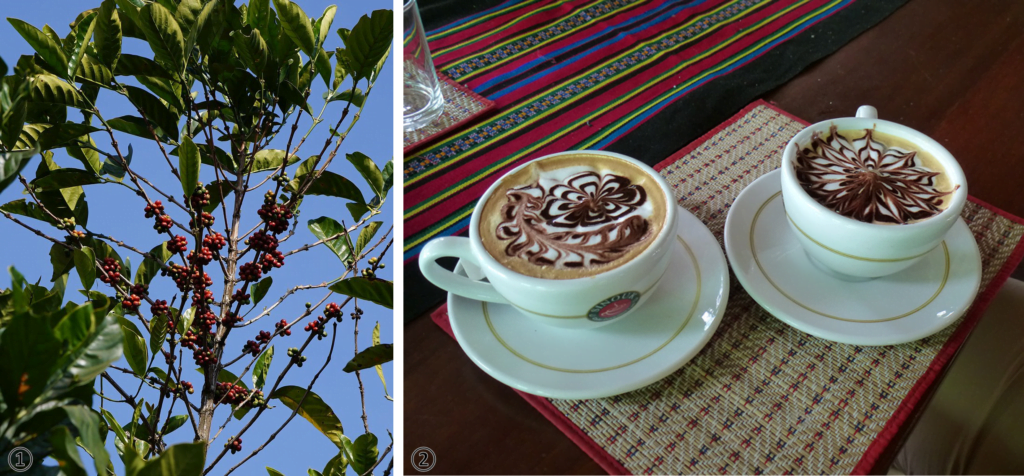
② Sinouk Coffee Resort, Bolaven Plateau, Champasak Province, Laos. © Tango7174, CC BY-SA 4.0, via Wikimedia Commons
Delight in the aroma of freshly brewed coffee as you immerse yourself in the local coffee culture, and don’t miss the chance to visit serene waterfalls that add a touch of magic to this highland paradise.
Wat Phu: Khmer Temple Complex
Journey south to explore Wat Phu, a Khmer temple complex dating back to the 11th century.
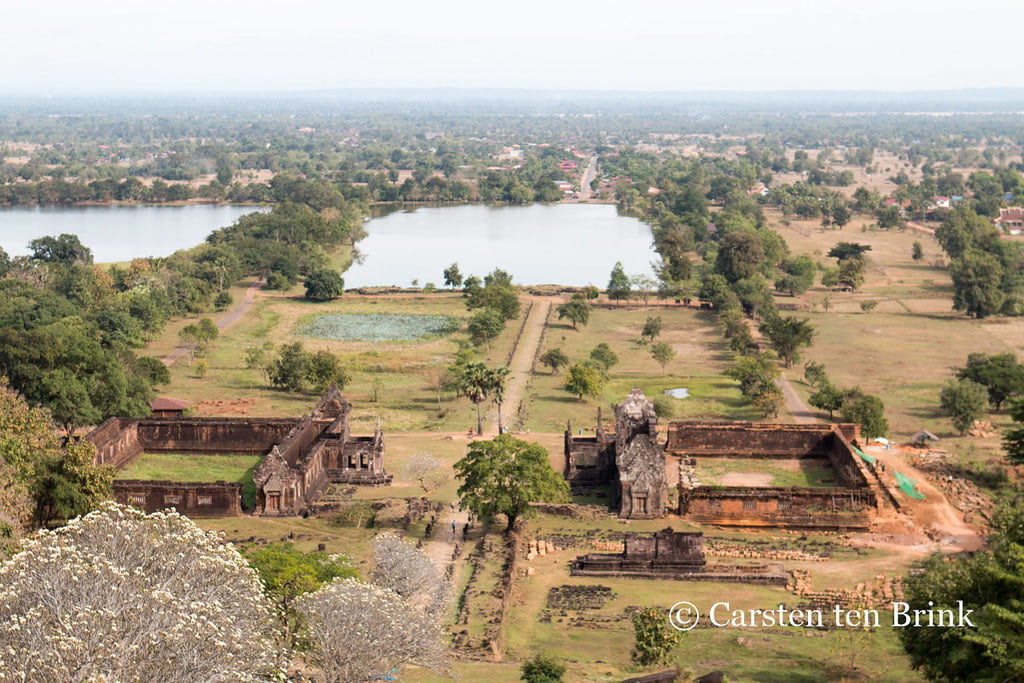
Marvel at the intricate carvings that adorn this architectural masterpiece, and enjoy panoramic views of the mighty Mekong River, providing a cultural and visual feast for the senses.
Conclusion
Our journey through Laos has been a celebration of rich traditions, bold flavors, and daring culinary adventures. From the symbolic Sticky Rice to the exotic delights of Ant Egg Soup and Bamboo Worms, every dish told a story of Laos’ vibrant culinary landscape.
Beyond the plate, Laos unveiled its treasures—ancient streets in Luang Prabang, the natural wonders of Vang Vieng, the mystical Plain of Jars, coffee paradises in Bolaven Plateau, and the Khmer temple complex of Wat Phu. Each destination added layers to our exploration, making Laos a holistic experience.
As we conclude this culinary odyssey, may the memories of unique tastes, cultural richness, and awe-inspiring landscapes linger. Laos, where tradition meets adventure, has left an indelible mark on our senses. Until our next gastronomic journey, farewell to the Land of a Million Elephants. Bon voyage!
Also Read: A Guide Before Flying To Budapest (With Images of 6 Best Attractions)
So what are your thoughts?
Did you like what you have read about “The Best Of Laos Food Culinary Wonders”? If so, please comment down below. Sharing your thoughts will encourage me to do better research and improve page content.
Moreover, to see more content like this check the travel section of Money For My Beer.

Lara is a freelance content writer and a cat mom to three furbabies, Mizu, Haru and Sora.
She graduated with a Bachelor’s Degree in Architecture and is a registered and licensed Architect. Aside from writing, she is fond of growing cacti and succulents and is a DIY type of girl.
During her free time, she engages herself in water-colouring and crocheting, while catching-up with an old tv series she just discovered. Lara loves to explore new places, but most of the time stays in her hometown province, reading historical romance novels over a cup of coffee – or matcha.

